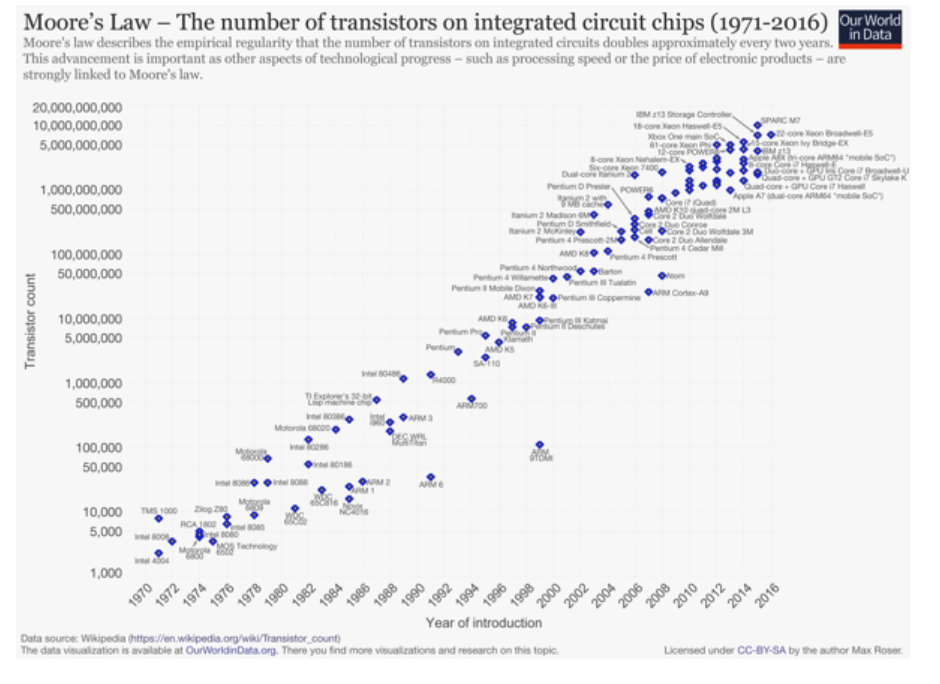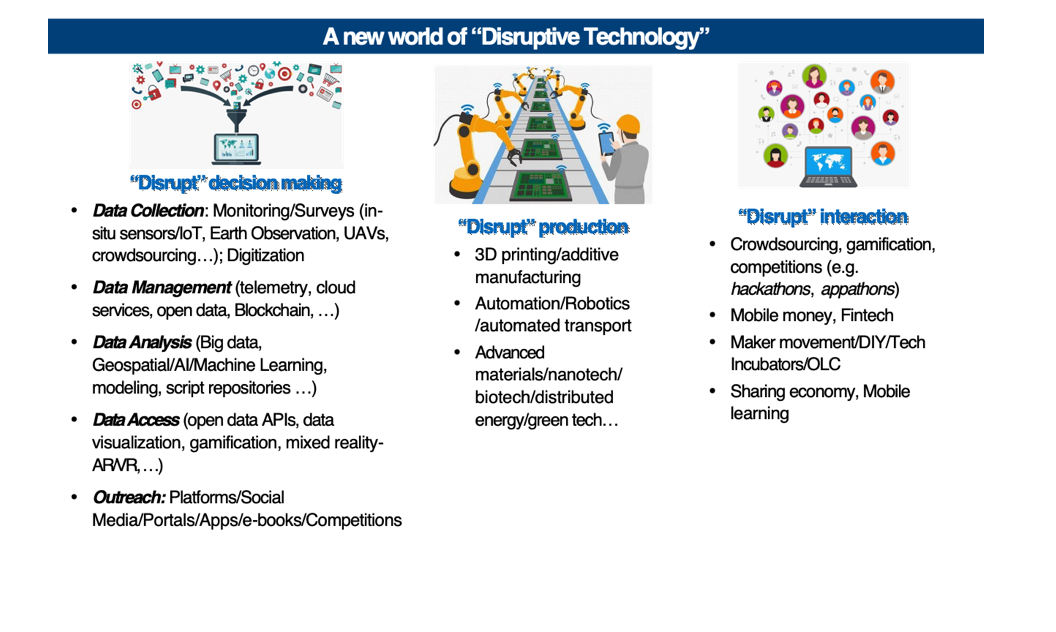There have always been developments in technology, but these are now coming at an accelerated pace. This has led to costs dropping and functionality increasing dramatically.
Costs are dropping and functionality is escalating…



There have always been developments in technology, but these are now coming at an accelerated pace. This has led to costs dropping and functionality increasing dramatically.
Costs are dropping and functionality is escalating…



There are numerous technologies that are evolving at a rapid pace - these can be “disruptive” depending on how these are used. We have classified these into three broad types depending on purpose:

An exciting range of technologies are emerging to help us better make evidence-based decisions. Inexpensive sensor networks integrated into an Internet of Things (IoT) approach are complemented by new “eyes in the sky” with satellite and drone earth observation power to help use better gather data and integrate with an increasingly digitalized economy. Improved telemetry, open data, cloud storage and analytics services, and distributed ledger (Blockchain) approaches to disrupt trust concerns are transforming the way this data is managed and analyzed using big (including geospatial) data processing, enhanced use of online modeling, machine learning and other Artificial Intelligence (AI) techniques. Access to these data are being revolutionized using Application Programming Interfaces (APIs), data and mapping standards, and innovative interactive data visualization. These can then be accesses using a range of platforms including portals, mobile Apps, and networked smart hardware at the user end (from smartphones, tablets, and computers to augmented/virtual reality devices.
Increasing automation is helping firms rethink the way products are made and distributed. Innovative technologies such as 3D printing or additive manufacturing has the potential to completely disrupt the location and methods of production and construction across sectors. A new generation of AI-powered robots has the potential to change the nature of work in several sectors. Automated transport have the potential to disrupt the way people and goods are moved around by driverless cars, trucks, ships, and unmanned aerial vehicles (UAVs). The use of advanced materials, nanotechnology, biotechnology, batteries, renewables, and other innovative manufactured products can help lower costs and improve performance across a range of development sectors.
This new world of disruptive technology is changing the way we all interact with each other, leveraging the economies of scale that comes from platforms that connect us. This includes enhancing the use of social networks facilitated by increasingly available digital connectivity, crowdsourcing ideas and financing, as we move to a sharing economy that encourages peer to peer platforms for collaborative consumption. Supply chains facilitated by blockchain has the potential to cut out many middlemen to improve efficiencies. A new generation can be part of the maker movement with do-it-yourself technologies in tech incubators. Digital ID and digital finance has the potential to change governance and spur financing innovations across the economy.
The real power of disruption comes in the way these technologies are combined and deployed to solve development challenges. They have tremendous potential in changing the way development happens around the world and also bring in concerns that need to be effectively managed.